Description
batja marawili
Earth pigments on Stringybark
76 x 33cm
Year: 2024
ID: 3447-24
Baraltja
Every season, the systems that feed the mangrove creek of Baraltja (home of Burrut’tji, the Lightning Snake) bring in the new season freshwaters from two major sources. One is from Dhalwaŋu clan estates of Gäŋgaŋ – the other from the lands of the artist’s Madarrpa clan estates towards Numbulwar – country associated with Baraltja called Baykultji. The connection is through this freshwater flooding at Baraltja.
As it does Burrut’tji ‘tastes” the first freshwater coming down. At this the Lightning Snake at its residence stands on its tail and spits lightning into the storm. Incoming waters flood first the plains then the mangrove lined creeks that finally empty into the sea. Leaves of the mangroves fallen into the water bank up on the surface in fields of red, yellow and black known as Motu. The serpent not shown here is as a sandbank ever shifting and changing in the waters denoted by the oval leaf shapes.
Manikay and ‘deep’ names associated with Baraltja are intoned and Burrut’tji danced at the completion of some ceremony for the Madarrpa and associate clans. Events associated with Burrut’tji are also enacted in ceremony.
In ancestral times, Burrut’tji travelled underground to Gäŋgaŋ (homeland of the Dhaḻwaŋu people) and other places far away from his home and into country belonging to other clans including the Maŋgalili.
The spine of the snake is important as it was laid underwater as part of a fish trap made by ancestral Yirritja. It is the ancestral remains of this trap that cause a natural barrage across the tidal creek leading out of Baraltja that concentrates the flow from the plain banking up the motu (fallen mangrove leaves) at this site.
In mortuary ceremonies held for Yolŋu in the past, a hollow log (larrakitj) was used to contain the bones of the deceased. Burrut’tji is closely associated with the hollow log in mortuary ceremonies. Burrut’tji and his home are most sacred aspects of the ceremony which would be conducted only by elder men. Women would not be able to enter the area of the ceremonial ground used to represent Burrut’tji’s home – the journey of the spirit of the deceased Maḏarrpa person begins from this site. In the less restricted sections of this story, both men and women dance the fish, birds, mangrove leaves, fish trap, dogs, tide lines and other elements and tell the same story through song and dance.
In summary, the muddied freshwater of the bottom Dhalwaŋu clan downstream from Gangan flow out through Baraltja (a small mangrove creek in a different watercouse). This is actually technically possible at the time of Wet Season inundation of the floodplains behind the mangroves where an expanse of water up to 50km long can exist connecting the two. But the real connection being mapped is that between the Dhalwaŋu and their mother’s mothers – the Madarrpa. The diamonds segueing into the elliptical shapes represents the passage down the Gangan River. The pure elliptical shapes represent the motu or mangrove leaves banking up against the sandbar in Baraltja.

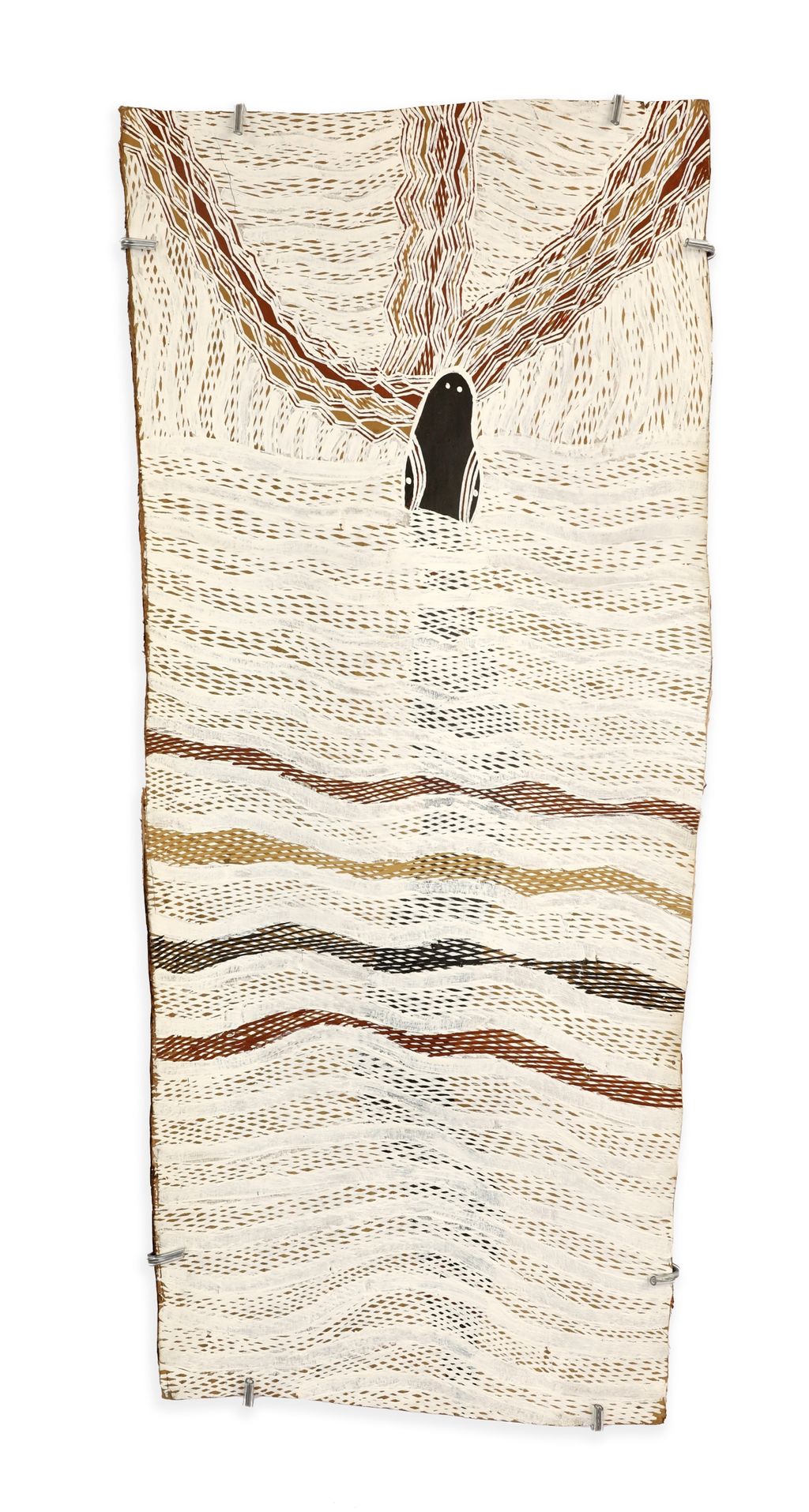
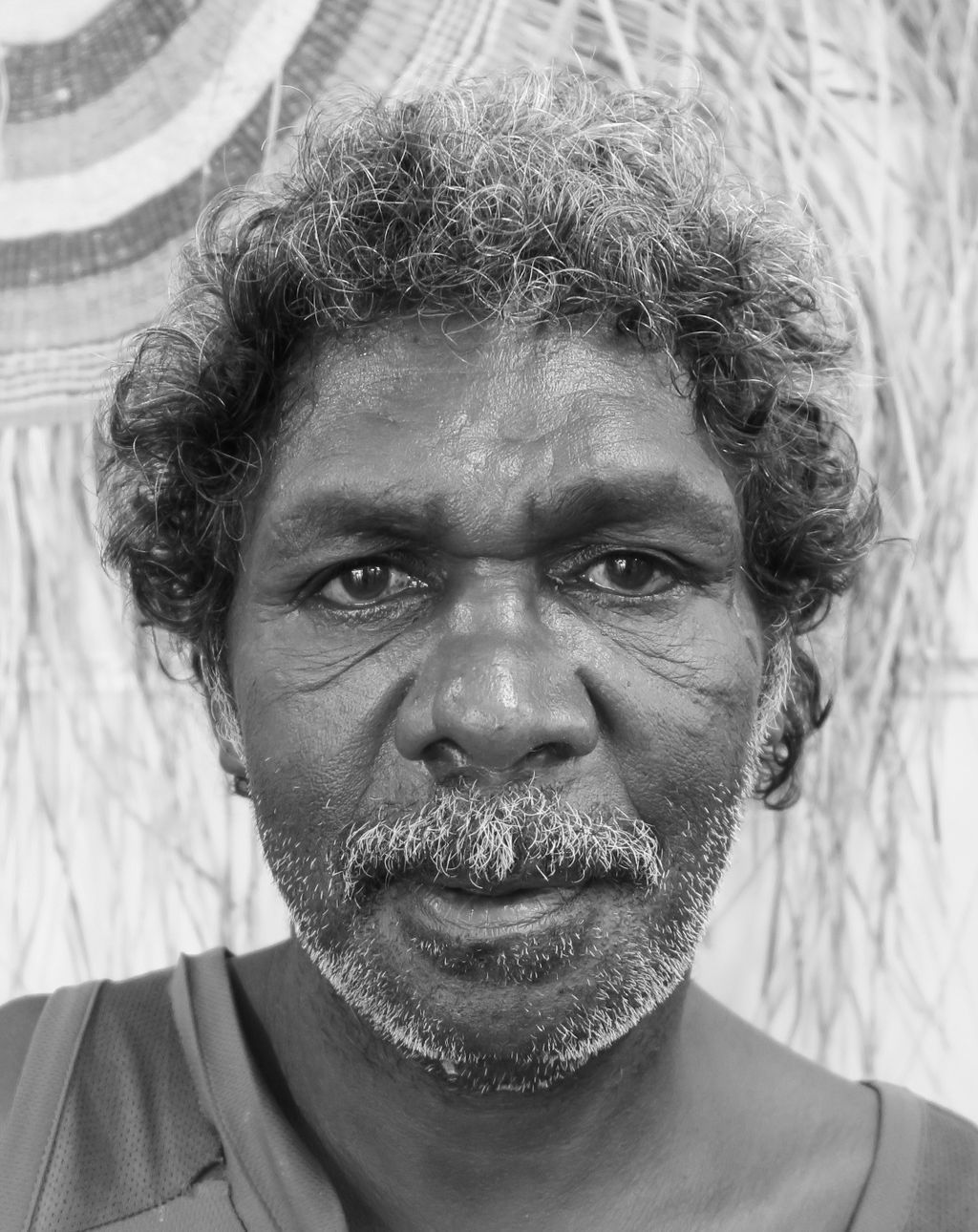
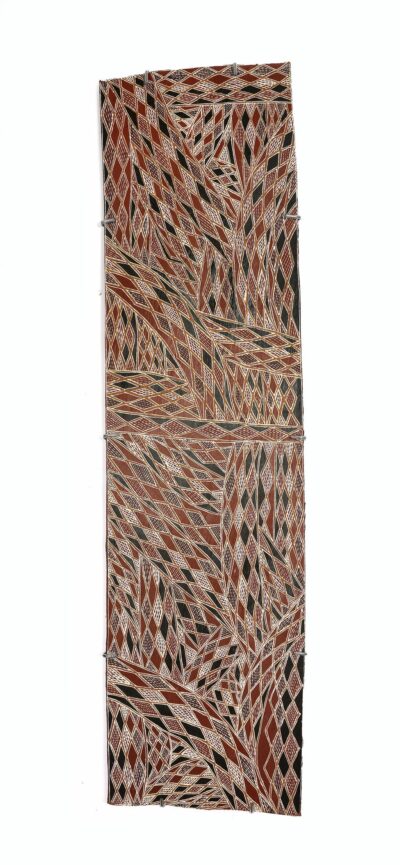
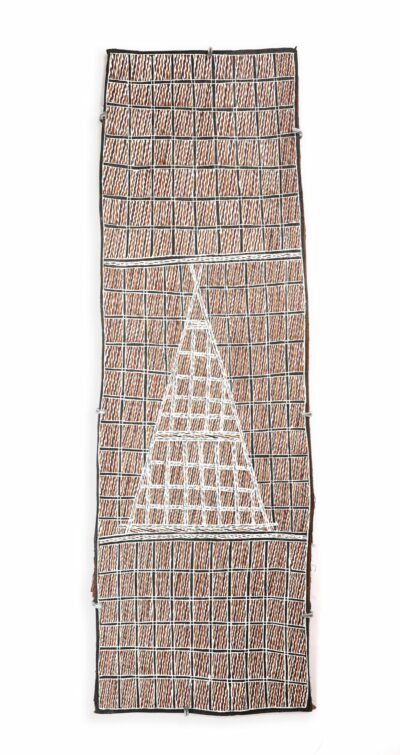
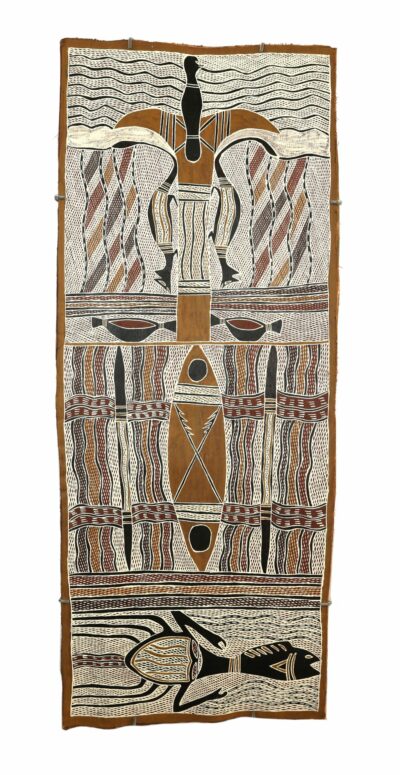
Reviews
There are no reviews yet.